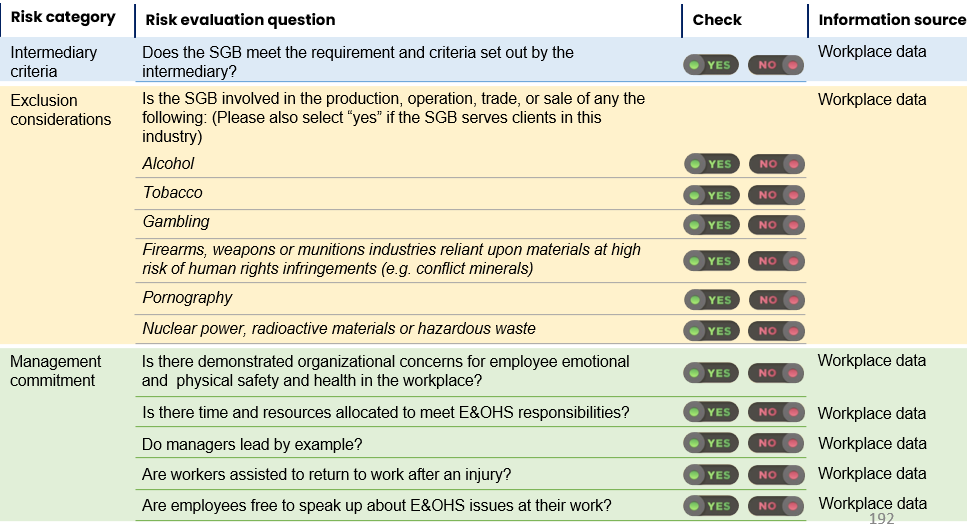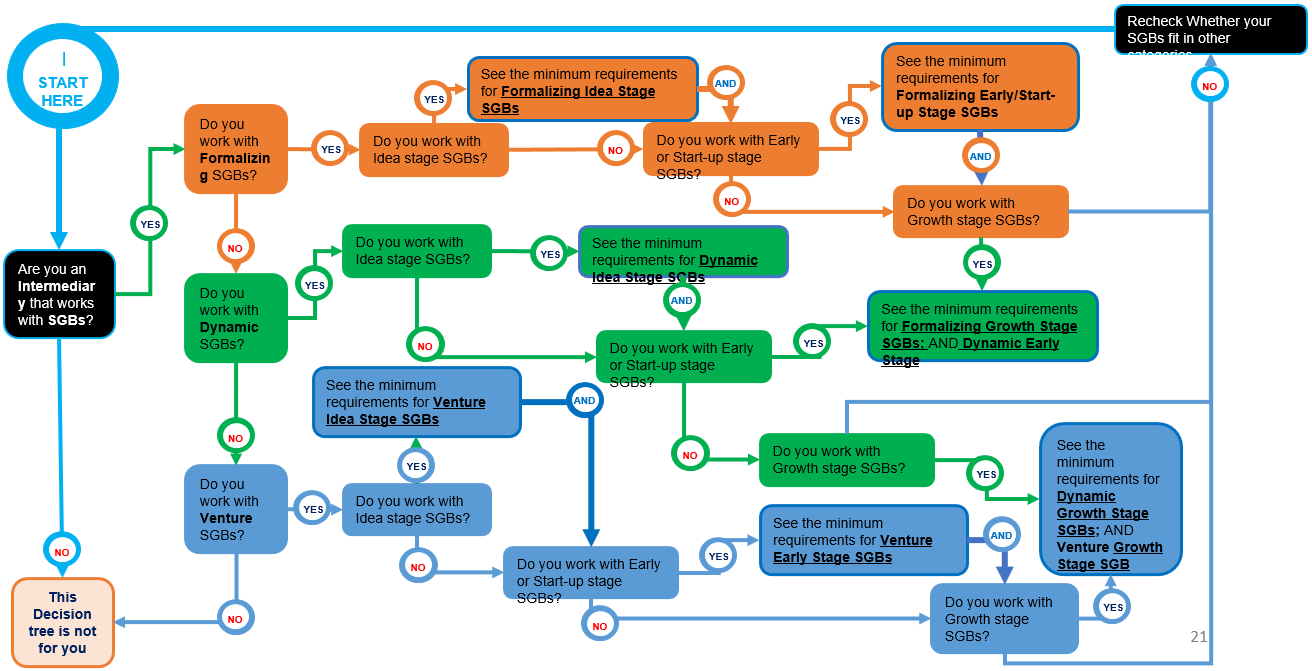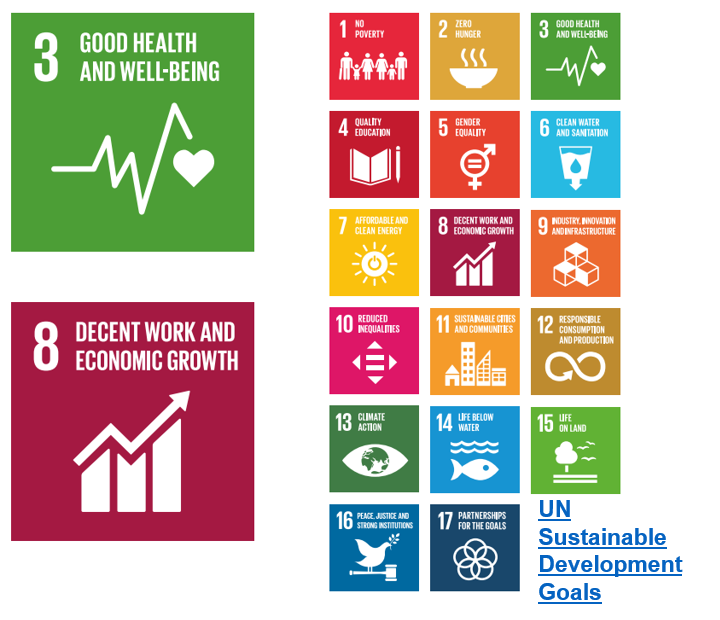Alignment to Criteria
Spotting risks to alignment to criteria
Spotting risks associated with alignment to criteria, requires reference to workplace data, and by talking to workers. In this way, it becomes necessary to assess the commitment of the management to E&OHS, check whether the SGB is within the exclusion considerations, and whether they meet criteria for admission within the intermediary programs.
Look at the Checklist (below) to explore the key questions to review with your intermediary.
Also look at the decision tree (below), to see if this is aligned with the typology of SGBs that you work with.
See Control & Preventative measures

International initiatives of E&OHS
Intermediary outreach
Recognizing that each intermediary may have varying requirements to admit/onboard SGBs, to support future SGBs , it is crucial that the intermediaries:
- Outreach: The intermediary will need to put out information through their various outreach and communication channels indicating the criteria they would use to recruit the SGBs.
- Clear communication of expectations: The outreach material should have clearly stated objectives of the
- Impact stories: Share with the SGBs case studies of types of SGBs that you work with.
- Embed E&OHS requirements in due diligence process: Clearly state that you are keen to follow-up on E&OHS issues.
Sustainable Development Goals
As we strive to achieve the Sustainable Development Goals, especially Goal 8 on Decent Work and economic growth, and Goal 3 on Good health and wellbeing, it is our hope that the toolkit will assist intermediaries in making occupational health and safety central to their programme

ILO Conventions & Recommendation
ILO Conventions and Recommendations, which set international labour standards on a broad range of subjects related to the world of work, including human rights at work, occupational safety and health, employment policy and human resources development.
Increasing concerns about the social impact of globalization led the members of the ILO - representatives of government, employers and workers at the international level - to recognize in 1995 that there were four categories of labour principles and rights, expressed in eight conventions (the so-called “core conventions”), that should be considered as fundamental because they protect basic workers’ rights.
These categories are:
- Freedom of association and the effective recognition of the right to collective bargaining
- The elimination of all forms of forced or compulsory labour
- The effective abolition of child labour; and
- The elimination of discrimination in respect of employment and occupation